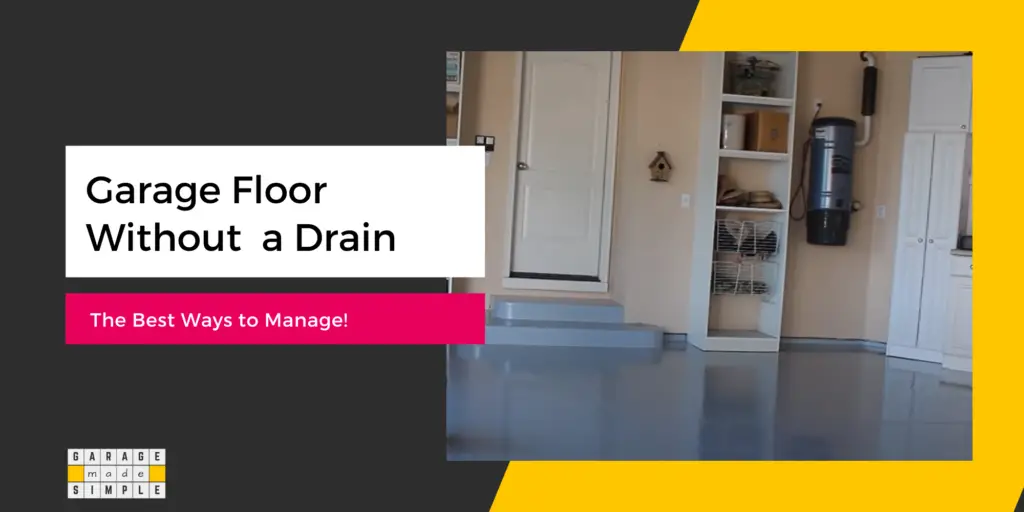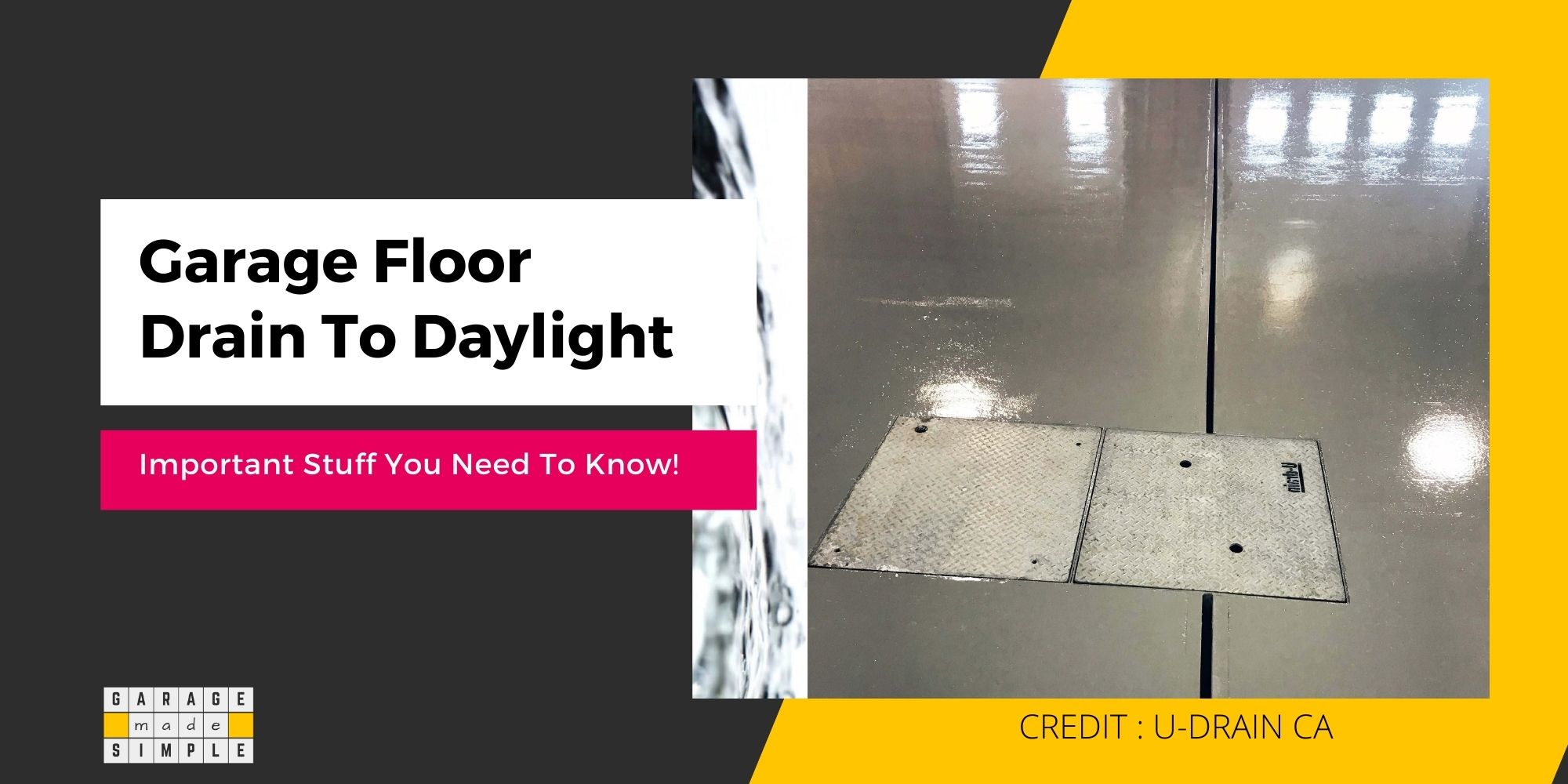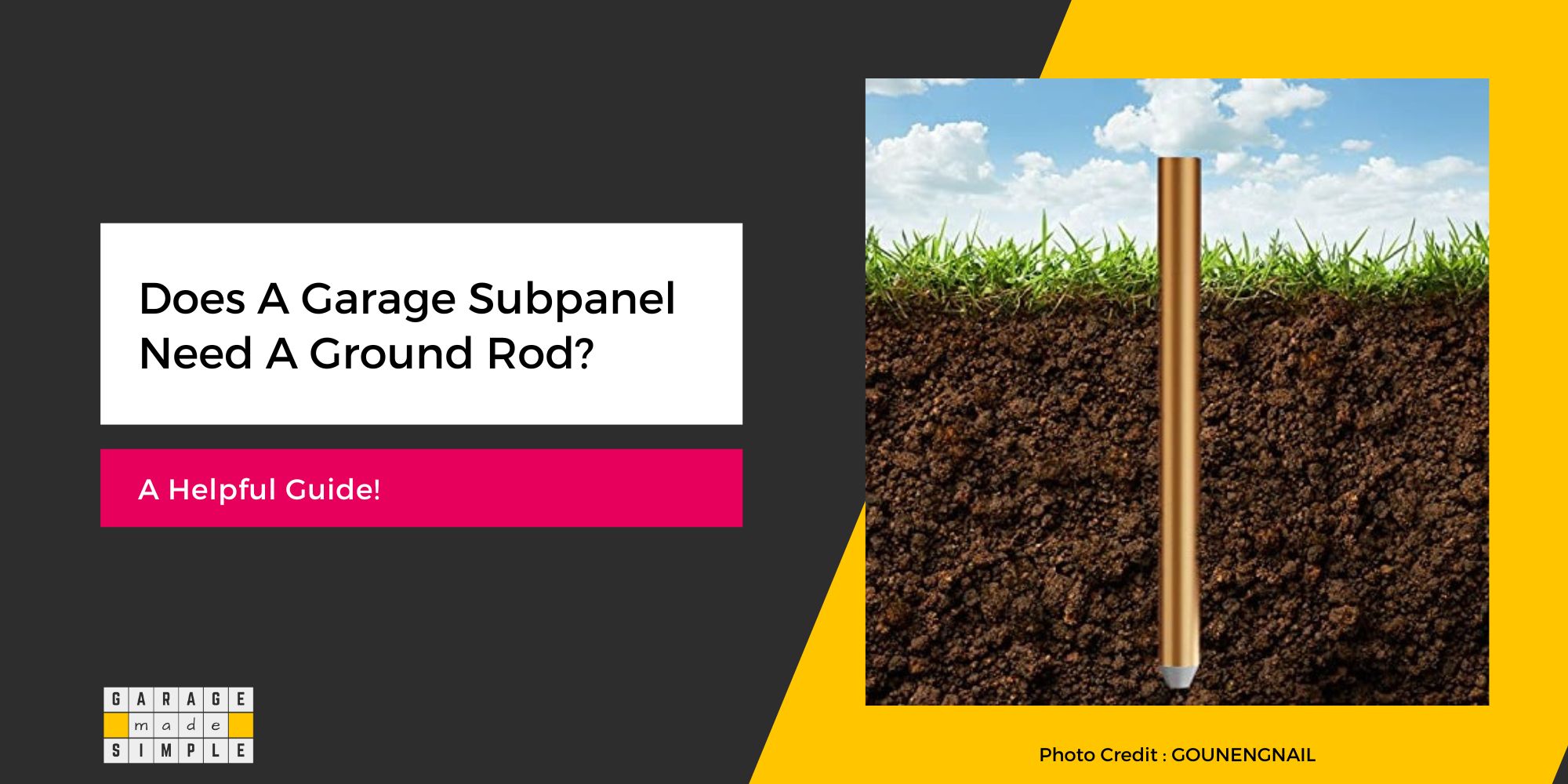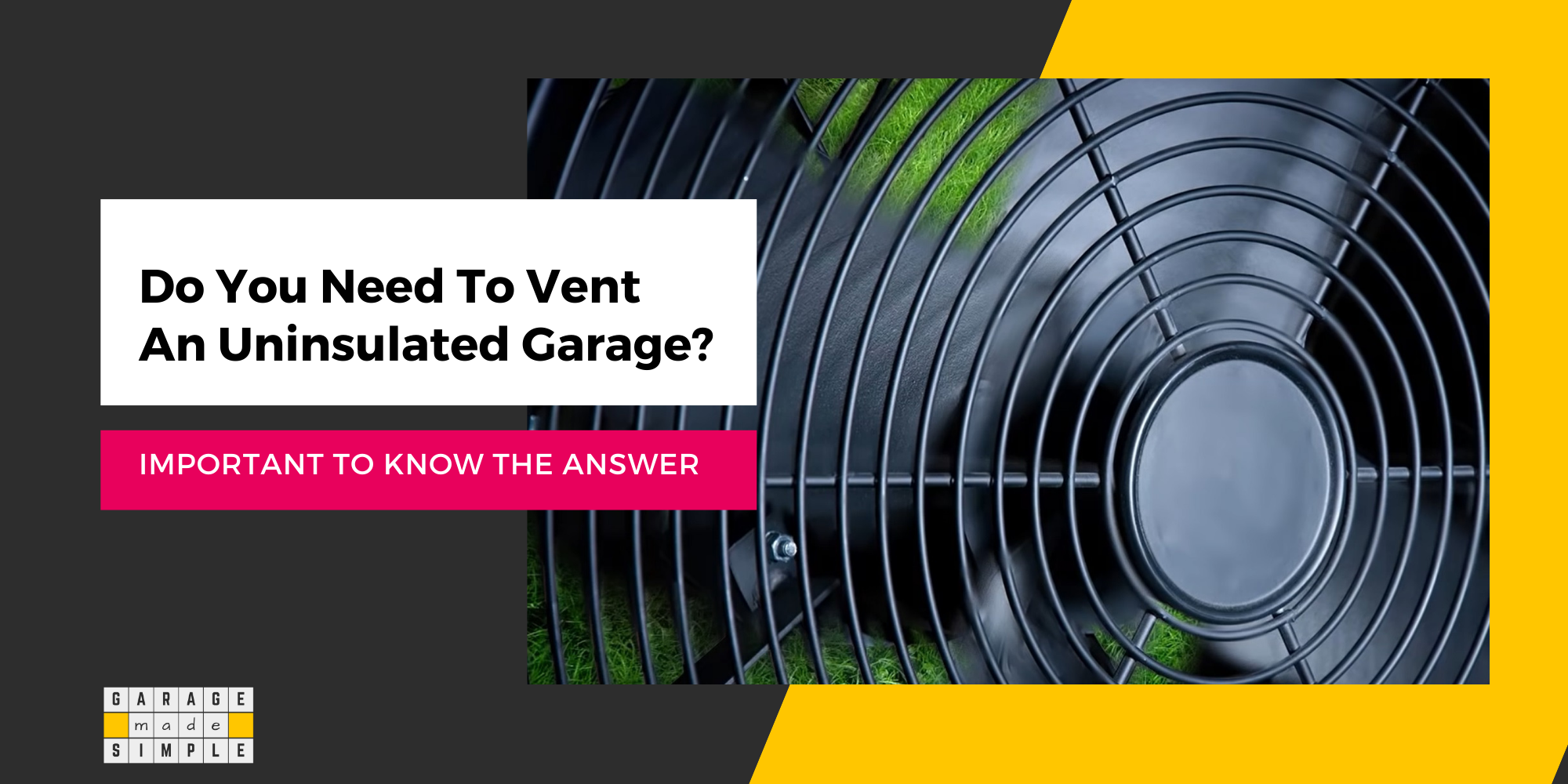Garage Floor Without a Drain? (The Best Ways to Manage!)
garagemadesimple.com is a participant in the Amazon Services LLC Associates Program, an affiliate advertising program designed to provide a means for sites to earn advertising fees by advertising and linking to Amazon.com . The website is also an affiliate of a few other brands.
What to Do About a Garage Floor Without a Drain?
Not all garages have drains. Having a drain on the garage floor is not a requirement by code. However, not having a drain does pose some difficulty when water pools on your garage floor. So what to do about a garage floor without a drain?
The best way to clear water from a garage is to ensure that the floor has a slope of 2% or more towards the garage door. Check for low spots where water tends to pool and level it out using a self leveling resurfacer.
You can also use some or all of the following options:
- Shop-Vac: can clear water and any other liquid spills pretty fast.
- Absorbent Car Mats: Park your car on absorbent car mats. They will absorb the water drips from the car and prevent them from spreading. You should dry out the mats as often as possible.
- Repair Any Leaks: Make sure to repair a leaky roof or plumbing, to prevent water from entering your garage.
- Waterproof Foundation Walls: Groundwater can seep into your garage when the water table rises if the foundation walls are not properly waterproofed
- Weather-seal Garage Door: Check and replace garage door seals regularly. Damaged seals will let water in even when the door is closed.
- Install a Driveway Trench Drain: It is much cheaper and easier to install a driveway trench drain than a garage floor drain. The trench drain prevents rainwater from the driveway from entering the garage, especially during heavy rains.
- Avoid Floor Storage: Keep garden equipment & supplies, sporting goods, paints & household chemicals on shelves or in airtight PVC storage bins.

What Are the Advantages of a Garage Floor Without Drains?
Having garage floor drains is certainly very helpful, but a garage floor without drains has a few advantages too!
No Clogging: With no drain, there is no risk of the drain clogging leading to some serious flooding.
Simplicity: A garage floor without a drain is a simpler design making it easier to keep clean and maintain.
Aesthetics: A garage floor uninterrupted by drains looks streamlined and classy, especially when it has a beautiful polycuramine or epoxy coating, such as RockSolid or EpoxyShield.
Building Permit: A garage with a drain needs to meet additional requirements to get the building permit. Getting a building permit for a garage without drains is a lot easier.
Lower Cost: Installing a drain in a garage floor can be expensive. Adding a drain to a garage floor can cost between $500 – $2500.
How to Maintain & Clean a Garage Floor Without Drains?
To maintain & clean a garage floor without drains, you must, obviously, try to minimize the use of water. Here is what you can do:
Remove any debris or dirt from the surface of the floor using a broom or a dustpan. Follow this up by using a vacuum to eliminate finer dust. Wipe down the floor with a damp mop or cloth to remove any remaining dirt or stains.
If the floor is heavily soiled or stained, you may need to use a commercial cleaning solution. Choose a product that is specifically designed for use on concrete surfaces and follow the instructions on the label. Rinse the floor with clean water to remove any residue from the cleaning solution.
If you have used a commercial cleaning solution, you may need to neutralize the pH of the floor by using a neutralizing solution or rinsing the floor with a solution of water and vinegar.
Dry the floor thoroughly using a towel or a mop. If the floor is still damp, use a floor fan or heater to speed up the drying process. Once the floor is clean and dry, you can apply a sealer or wax to protect the surface and make it easier to maintain.
NOTE: If you have a lot of water on the floor, it may be necessary to use a shop vac or a sump pump to remove the excess water before cleaning the floor.
How to Fix an Uneven Garage Floor?
When your garage floor does not have a drain it is extremely important that it has a good slope towards the garage door. Moreover, it should be perfectly even and there should be no low spots.
Here are some of the ways you can fix an uneven garage floor, depending on the severity of the problem and your budget:
Grinding:
If the unevenness is minimal and the floor is relatively smooth, you may be able to use a concrete grinder to even out the surface. This involves using a machine with a rotating abrasive disc to remove a thin layer of concrete from the high spots on the floor.
Self-leveling Compound:
If the unevenness is minor and the floor is relatively smooth, you may be able to use a self-leveling compound to even out the surface. Simply mix the compound according to the manufacturer’s instructions and spread it over the floor using a trowel. The compound will flow into any low spots and level out the surface.
Concrete Resurfacing:
If the unevenness is more significant, you may need to resurface the entire garage floor. This involves removing the top layer of concrete and replacing it with a new layer. This can be a labor-intensive and expensive process, but it can give you a completely level and smooth garage floor.
Thank you very much for reading the post. I do hope you found it informative and useful.







